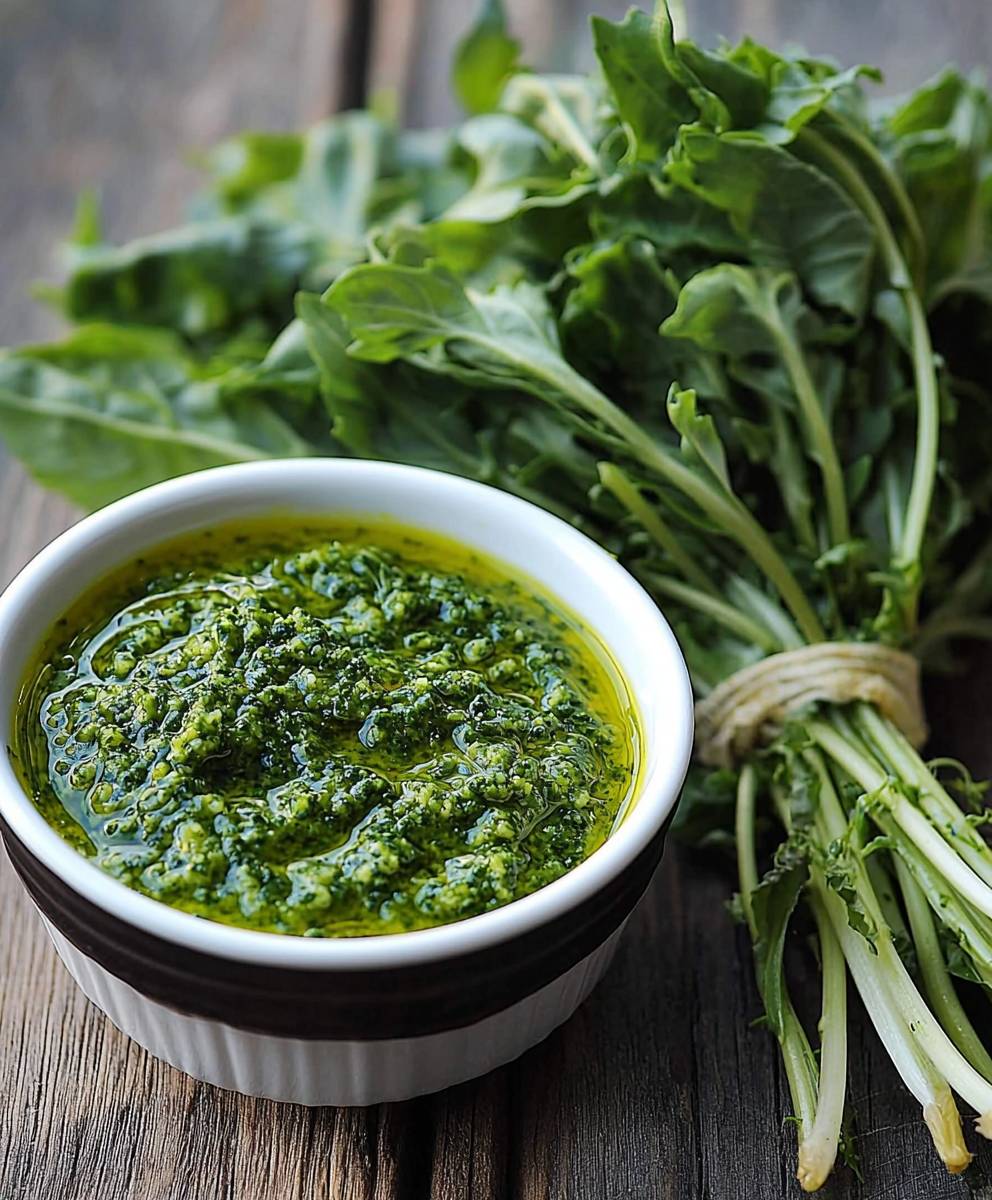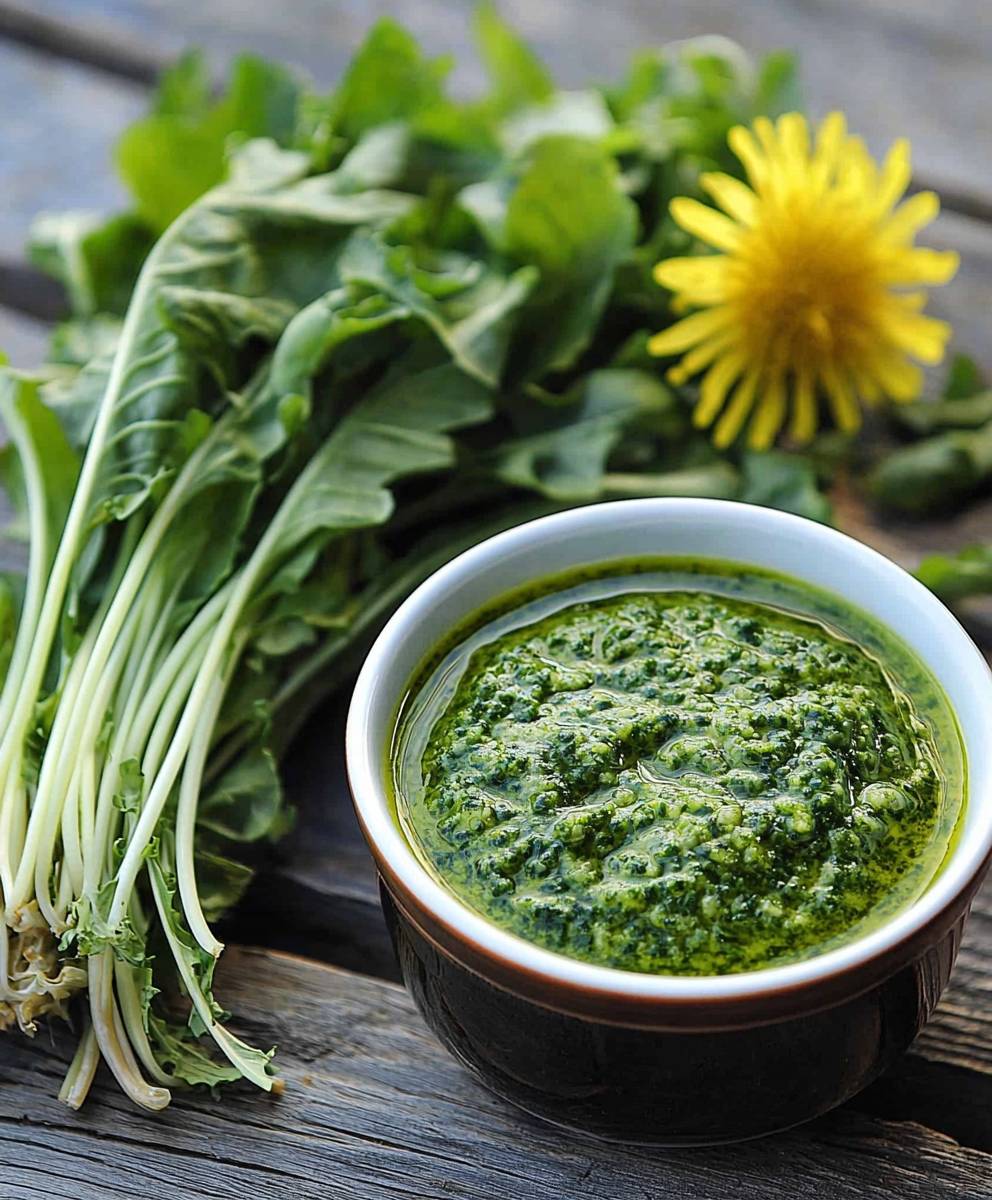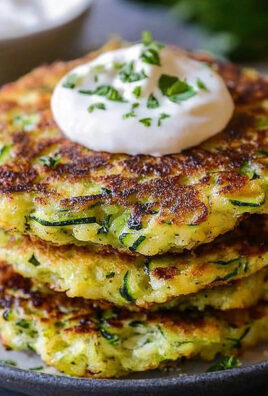Dandelion pesto might sound like something straight out of a fairy tale, but trust me, this vibrant green sauce is a delicious and surprisingly versatile addition to your culinary repertoire! Forget what you think you know about dandelions being just pesky weeds; they’re actually packed with nutrients and offer a unique, slightly bitter flavor that’s absolutely captivating when transformed into pesto.
Historically, dandelions have been valued for their medicinal and culinary properties across various cultures. From dandelion root coffee to dandelion greens in salads, resourceful cooks have long utilized every part of this plant. Making dandelion pesto is a continuation of this tradition, a way to connect with nature and create something truly special from ingredients often overlooked.
So, why do people love dandelion pesto? Well, beyond its intriguing backstory, it boasts a bright, herbaceous flavor with a subtle peppery kick. The texture is wonderfully smooth and creamy, just like traditional basil pesto, making it perfect for tossing with pasta, spreading on sandwiches, or using as a flavorful dip. Plus, it’s incredibly easy to make, requiring only a handful of ingredients and a few minutes of your time. Get ready to be amazed by this unexpected culinary gem!
Ingredients:
- 2 cups fresh dandelion greens, thoroughly washed and dried
- 1/2 cup grated Parmesan cheese (or Pecorino Romano for a sharper flavor)
- 1/2 cup pine nuts (walnuts or sunflower seeds can be substituted)
- 2-4 cloves garlic, minced (adjust to your taste)
- 1/2 cup extra virgin olive oil, plus more as needed
- 1-2 tablespoons lemon juice, freshly squeezed
- Salt and freshly ground black pepper to taste
- Optional: Red pepper flakes for a touch of heat
Preparing the Dandelion Greens:
Okay, let’s talk about the most important part: the dandelions! You want to make sure you’re using young, tender greens. Older leaves can be quite bitter. And, of course, make absolutely sure they’re from a safe source no pesticides or herbicides! I usually harvest mine from my backyard (which I know is pesticide-free), but you can also find them at some farmers’ markets or specialty stores.
Washing is crucial. Dandelion greens can be gritty, so give them a really good rinse. I like to soak them in a bowl of cold water for a few minutes, then swish them around and lift them out, leaving any dirt behind. Repeat this a couple of times until the water is clear. After washing, dry the greens thoroughly. You can use a salad spinner or spread them out on a clean kitchen towel and pat them dry. Excess water will make your pesto watery, and we don’t want that!
Toasting the Nuts (Optional but Recommended):
Toasting the pine nuts (or whatever nuts you’re using) really brings out their flavor and adds a nice depth to the pesto. It’s a simple step that makes a big difference.
- Preheat a dry skillet over medium heat.
- Add the pine nuts to the skillet in a single layer.
- Cook, stirring frequently, until they are lightly golden brown and fragrant. This usually takes about 3-5 minutes. Watch them carefully, as they can burn quickly!
- Remove the pine nuts from the skillet and let them cool completely before using.
Making the Dandelion Pesto:
Now for the fun part! This is where all the flavors come together. You can use a food processor or a blender for this. I prefer a food processor because it gives the pesto a slightly coarser texture, which I like. But a blender will work just fine, especially if you want a smoother pesto.
- Combine the dandelion greens, Parmesan cheese, pine nuts, and garlic in the food processor. Pulse a few times to coarsely chop the ingredients.
- With the food processor running, slowly drizzle in the olive oil. Process until the mixture forms a smooth paste. You may need to stop the food processor and scrape down the sides a few times to ensure everything is evenly incorporated.
- Add the lemon juice, salt, and pepper. Pulse a few more times to combine. Taste and adjust the seasoning as needed. You might want to add more lemon juice for brightness, more salt for flavor, or a pinch of red pepper flakes for a little kick.
- If the pesto is too thick, add a little more olive oil until it reaches your desired consistency. I like my pesto to be thick enough to cling to pasta but still easily spreadable.
Tips and Variations:
Pesto is a very forgiving recipe, so feel free to experiment and make it your own! Here are a few ideas:
- Nut Variations: As mentioned earlier, you can substitute walnuts or sunflower seeds for pine nuts. Walnuts will give the pesto a slightly earthier flavor, while sunflower seeds are a good option if you have a nut allergy.
- Cheese Variations: Pecorino Romano cheese is a great alternative to Parmesan. It has a sharper, saltier flavor that pairs well with the bitterness of the dandelion greens. You can also use a combination of Parmesan and Pecorino.
- Herb Variations: Add a handful of fresh basil or parsley to the pesto for extra flavor.
- Vegan Option: To make this pesto vegan, substitute nutritional yeast for the Parmesan cheese. You can also add a tablespoon or two of white miso paste for a cheesy, umami flavor.
- Garlic Intensity: Adjust the amount of garlic to your liking. If you’re not a big fan of garlic, start with one clove and add more as needed.
- Blanching the Greens: Some people prefer to blanch the dandelion greens before making pesto to reduce their bitterness. To blanch them, simply boil them in salted water for 1-2 minutes, then immediately transfer them to an ice bath to stop the cooking process. Drain them well and squeeze out any excess water before using them in the pesto. I personally don’t find this necessary if I’m using young, tender greens.
Serving Suggestions:
Dandelion pesto is incredibly versatile! Here are some of my favorite ways to use it:
- Pasta: Toss it with your favorite pasta shape for a quick and easy meal. I especially love it with linguine or spaghetti.
- Sandwiches and Wraps: Spread it on sandwiches or wraps for a flavorful and healthy condiment.
- Pizza: Use it as a base for pizza instead of tomato sauce.
- Grilled Vegetables: Brush it on grilled vegetables like zucchini, eggplant, or bell peppers.
- Chicken or Fish: Use it as a marinade or topping for grilled or baked chicken or fish.
- Dips: Mix it with cream cheese or sour cream for a delicious dip for vegetables or crackers.
- Eggs: Swirl it into scrambled eggs or omelets for a burst of flavor.
Storage:
Dandelion pesto is best used fresh, but it can be stored in the refrigerator for up to 3-4 days. To prevent it from browning, drizzle a thin layer of olive oil over the top before storing it. You can also freeze pesto for longer storage. Spoon it into ice cube trays and freeze until solid, then transfer the pesto cubes to a freezer bag. This makes it easy to thaw out small portions as needed.
Troubleshooting:
Sometimes, things don’t go exactly as planned. Here are a few common problems and how to fix them:
- Pesto is too bitter: This is usually due to using older dandelion greens. Try adding more lemon juice or Parmesan cheese to balance the bitterness. You can also try blanching the greens before making the pesto.
- Pesto is too thick: Add more olive oil until it reaches your desired consistency.
- Pesto is too thin: Add more Parmesan cheese or pine nuts to thicken it up.
- Pesto is too bland: Add more salt, pepper, garlic, or lemon juice to taste.
- Pesto is browning: This is a natural process that happens when pesto is exposed to air. To prevent it, drizzle a thin layer of olive oil over the top before storing it.
And that’s it! I hope you enjoy making and eating this delicious and unique dandelion pesto. It’s a great way to use those often-overlooked weeds in your yard and create something truly special. Happy cooking!

Conclusion:
And there you have it! This dandelion pesto recipe is more than just a way to use those sunny yellow flowers popping up in your yard; it’s a culinary adventure waiting to happen. I truly believe this is a must-try recipe for anyone looking to add a unique, vibrant, and slightly bitter twist to their meals. The slightly peppery bite of the dandelion greens, balanced by the richness of the nuts and cheese, creates a flavor profile that’s both intriguing and incredibly satisfying.
But why is this dandelion pesto so special? It’s not just about the taste, although that’s a major draw! It’s about connecting with nature, utilizing readily available resources, and creating something truly delicious from something often overlooked. It’s a conversation starter, a culinary experiment, and a testament to the fact that delicious food can be found in the most unexpected places. Plus, it’s incredibly versatile!
Think beyond just tossing it with pasta. Imagine spreading it on crusty bread for a flavorful appetizer, dolloping it on grilled chicken or fish for an herbaceous boost, or using it as a vibrant base for homemade pizza. You could even swirl it into scrambled eggs for a gourmet breakfast treat. The possibilities are truly endless!
And speaking of possibilities, don’t be afraid to experiment with variations! If you prefer a milder flavor, blanch the dandelion greens briefly before blending. You can also substitute different nuts, like walnuts or pecans, for the pine nuts. For a vegan version, simply omit the Parmesan cheese or use a vegan Parmesan alternative. A squeeze of lemon juice can brighten the flavors even further. I encourage you to make this recipe your own and tailor it to your personal preferences.
Here are a few serving suggestions to get you started:
Serving Suggestions:
- Toss with your favorite pasta shape for a quick and easy weeknight meal.
- Spread on crostini and top with sliced tomatoes and a sprinkle of balsamic glaze.
- Use as a marinade for grilled chicken or fish.
- Stir into risotto for a vibrant and flavorful dish.
- Thin it out with a little olive oil and use it as a salad dressing.
I’m so excited for you to try this recipe and discover the magic of dandelion pesto for yourself. It’s a surprisingly simple recipe to make, and the results are truly rewarding. The vibrant green color and unique flavor will elevate any dish you add it to.
So, gather your dandelion greens, grab your food processor, and get ready to create something amazing! I’m confident that you’ll be pleasantly surprised by the deliciousness of this often-overlooked ingredient.
Once you’ve tried it, I’d absolutely love to hear about your experience! Share your photos and variations on social media using [Your Hashtag Here] I can’t wait to see what culinary creations you come up with. Don’t be shy about sharing your thoughts and tips in the comments below either. Let’s build a community of dandelion pesto enthusiasts! Happy cooking, and enjoy the taste of spring!
Dandelion Pesto: The Ultimate Guide to Making and Using It
Vibrant pesto featuring fresh dandelion greens, Parmesan, pine nuts, garlic, and lemon juice. A unique and delicious way to use foraged ingredients!
Ingredients
- 2 cups fresh dandelion greens, thoroughly washed and dried
- 1/2 cup grated Parmesan cheese (or Pecorino Romano for a sharper flavor)
- 1/2 cup pine nuts (walnuts or sunflower seeds can be substituted)
- 2-4 cloves garlic, minced (adjust to your taste)
- 1/2 cup extra virgin olive oil, plus more as needed
- 1-2 tablespoons lemon juice, freshly squeezed
- Salt and freshly ground black pepper to taste
- Optional: Red pepper flakes for a touch of heat
Instructions
- Prepare the Dandelion Greens: Thoroughly wash and dry the dandelion greens. Soak in cold water, swish, and lift out, repeating until the water is clear. Dry completely using a salad spinner or kitchen towel.
- Toast the Nuts (Optional): Preheat a dry skillet over medium heat. Add pine nuts in a single layer and cook, stirring frequently, until lightly golden brown and fragrant (3-5 minutes). Remove from skillet and let cool.
- Make the Pesto: Combine dandelion greens, Parmesan cheese, pine nuts, and garlic in a food processor. Pulse to coarsely chop.
- With the food processor running, slowly drizzle in the olive oil. Process until a smooth paste forms, scraping down the sides as needed.
- Add lemon juice, salt, and pepper. Pulse to combine. Taste and adjust seasoning as needed.
- If the pesto is too thick, add more olive oil until desired consistency is reached.
Notes
- Use young, tender dandelion greens from a safe, pesticide-free source.
- Toasting the nuts enhances their flavor.
- A food processor gives a coarser texture; a blender yields a smoother pesto.
- Adjust garlic, lemon juice, and red pepper flakes to your preference.
- For a vegan option, substitute nutritional yeast for Parmesan cheese.
- Blanching the greens (boiling for 1-2 minutes then shocking in ice water) can reduce bitterness, but is often unnecessary with young greens.
- Store in the refrigerator for 3-4 days, drizzled with olive oil to prevent browning. Freeze in ice cube trays for longer storage.
- Serve with pasta, sandwiches, pizza, grilled vegetables, chicken, fish, dips, or eggs.





Leave a Comment